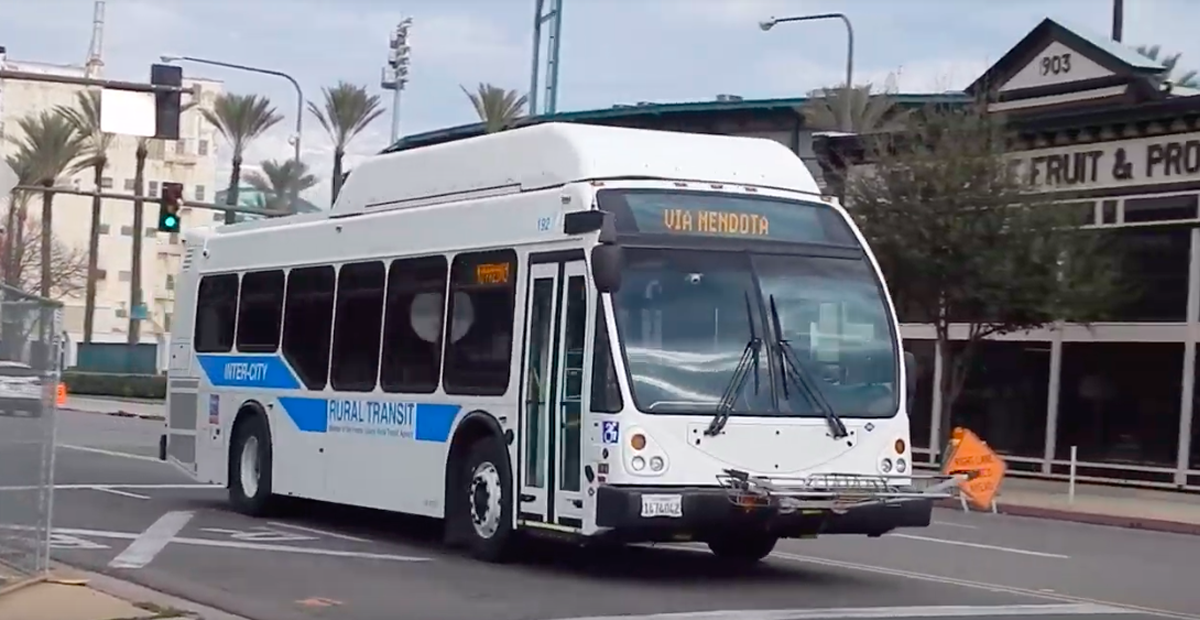The Fresno Council of Government’s Policy Advisory Committee on June 14 approved the annual “Unmet Public Transportation Needs” report.
The report says the public transportation needs within Fresno County will be reasonably met in the 2019-2020 fiscal year. Fresno County’s public transportation needs are served by Fresno Area Express, Clovis Transit and Fresno County Rural Transit Agency.
COG’s Policy Advisory Committee is made up mostly of city managers. The report now heads to COG’s Policy Board (mostly mayors) later this month.
The report says much about the logistics and politics of mobility in Fresno County with its 6,000 square miles and 1 million people.
Under California’s Transportation Development Act, says a COG staff report, “Fresno COG’s Policy Board must determine that public transport needs within Fresno County will be reasonably met in fiscal year 2019-20 prior to approving Local Transportation Fund claims for streets and roads.”
COG’s Social Services Transportation Advisory Council in recent months did a great deal of outreach on this issue.
Says the staff report: “After a thorough review of all comments and issues, the Social Services Transportation Advisory Council found there to be no unmet transit needs that are reasonable to meet in Fresno County.”
The “Unmet Needs” report runs to 86 pages with attachments. That’s a lot to condense.
Permit me to make two points about the report.
First, the “Unmet Needs” report does an excellent job of summarizing the society that is Fresno County. A few highlights:
The county’s estimated population in 2017 was 971,616. About one in nine residents was 65 or older. About one in four residents was deemed low income. About one in 71 residents was both 65 or older and low income.
Fresno’s estimated population in 2017 was 519,037. About one in 10 Fresno residents was 65 or older. About one in 71 Fresno residents was both 65 or older and low income.
Clovis’s estimated population in 2017 was 104,411. About one in eight Clovis residents was 65 or older. About one in 125 Clovis residents was both 65 or older and low income.
Nearly 20% of Fresno County residents (one in five) in 2017 were disabled. Males made up about two-thirds of this group.
Nearly 76% of Fresno County residents in 2017 were age 16 or older – driving age.
Fresno County in 2017 had 301,824 total housing units. There were 531,955 total household vehicles. That averages out to 1.75 vehicles per household.
These numbers suggest that public transportation’s main pool of customers consists of the elderly, those of low income, the disabled and those without convenient access to private vehicles.
These numbers also show that, while the Fresno-Clovis metropolitan area is the dominant urban center with more than 60% of the population, the county’s small incorporated towns and unincorporated areas are home to a significant number of people.
Second, the “Unmet Needs” report includes more than two dozen public comments and the written responses from the appropriate operator of public transportation. None of the comments was deemed to have identified an unmet need.
There is a formal definition of an unmet transit need. For example (if I read the definition correctly), you can’t demand a transit service that would end up bankrupting the service-provider, thus making the perfect the enemy of the good.
I provide here five pertinent public comments with the operator responses:
1.) Public Comment (addressed to all jurisdictions): “Transportation agencies need to work closer together with local communities to develop transit solutions that are better suited to the needs of the local community. Some solutions may entail thinking ‘outside the box.’”
Operator Response: “Transportation agencies and transit operators conduct a wide variety of public outreach to work with local communities to address local transit needs…. FAX will test a micro-transit demonstration project in 2020. Clovis Transit will embark on a localized route study next year that will also include public outreach. FCRTA switched operators in September 2018 which has drastically improved reliability and safety of all subsystems.”
2.) Public Comment (addressed to FAX): “When will the buses have Wi-Fi?”
Operator Response: “FAX is exploring opportunities to provide Wi-Fi on Bus Rapid Transit buses as a pilot demonstration program to gather data on the usage and benefits of Wi-Fi.”
3.) Public Comment (addressed to FAX): “Route 38 is often standing room only. What can be done to fix this?” (Much of Route 38 is along Cedar Avenue.)
Operator Response: “FAX anticipates adding buses to the southern portion of Route 38 upon their arrival, contributing to further on-time performance improvements, as well as capacity improvements.”
4.) Public Comment (addressed to FAX): “More transportation options are needed for employees to and from around the Amazon Fulfillment Center.”
Operator Response: “While a review of potential transit options to the Amazon Fulfillment Center and North Pointe Business Park has been initiated, no funding has been identified for services to this area.”
5.) Public Comment (addressed to FAX and FCRTA): “How can public transit and ride-sharing services be utilized to improve public health and social service needs in impoverished communities?”
Operator Response: “Public transit providers operate under strict guidelines and directives. Ridesharing services are private enterprises and thus have much more flexibility in the types of services they can provide. Pending demand and accessibility, ridesharing providers can provide first and last mile services, thus helping to extend the reach of fixed route transit to health and social services, as well as other needs, in local communities. FCRTA currently has a planning consultant reviewing such a concept and should be completed within the next 18-24 months.”
My takeaway from the “Unmet Needs” report: The delivery of public transportation services is not for the faint of heart.










